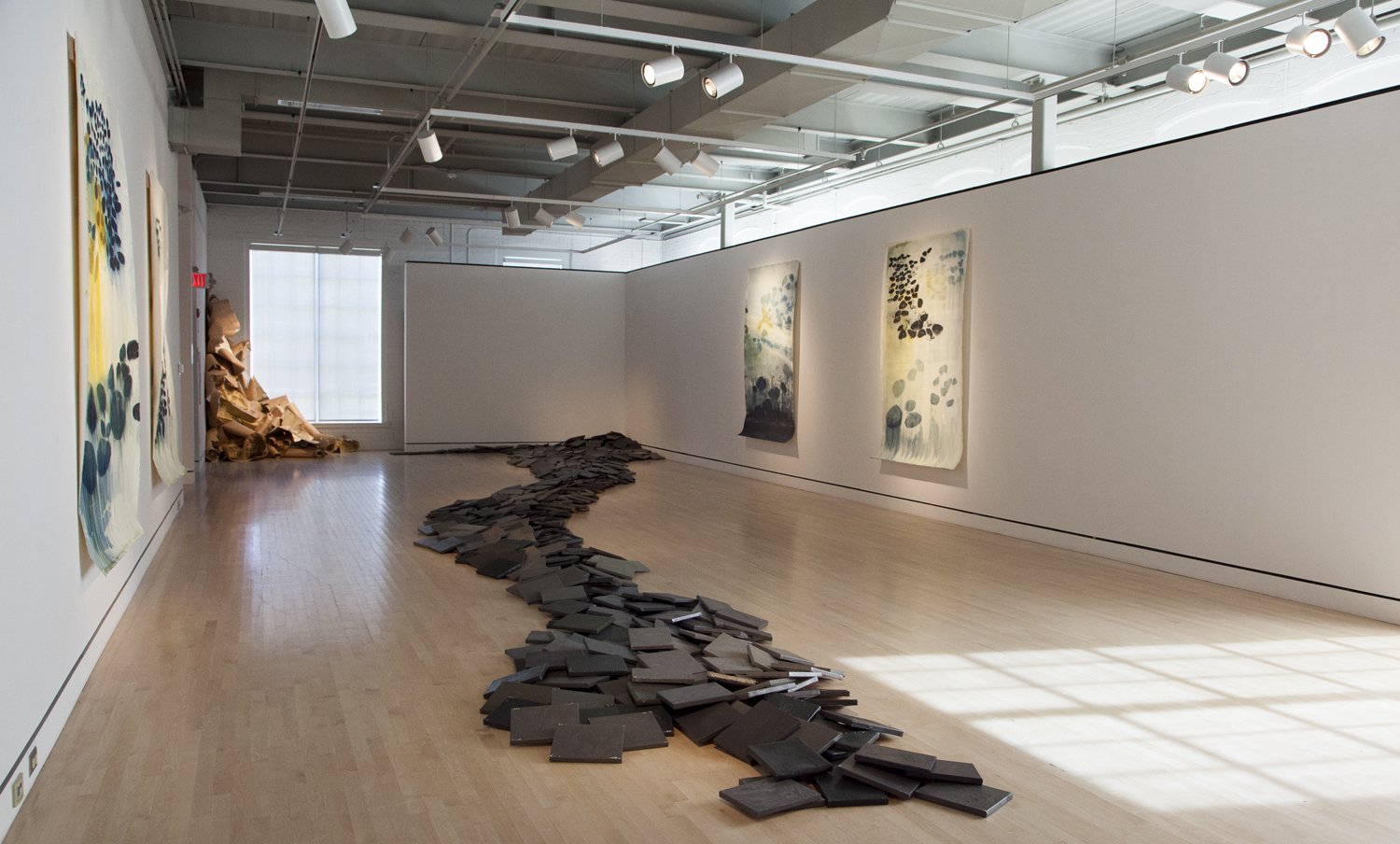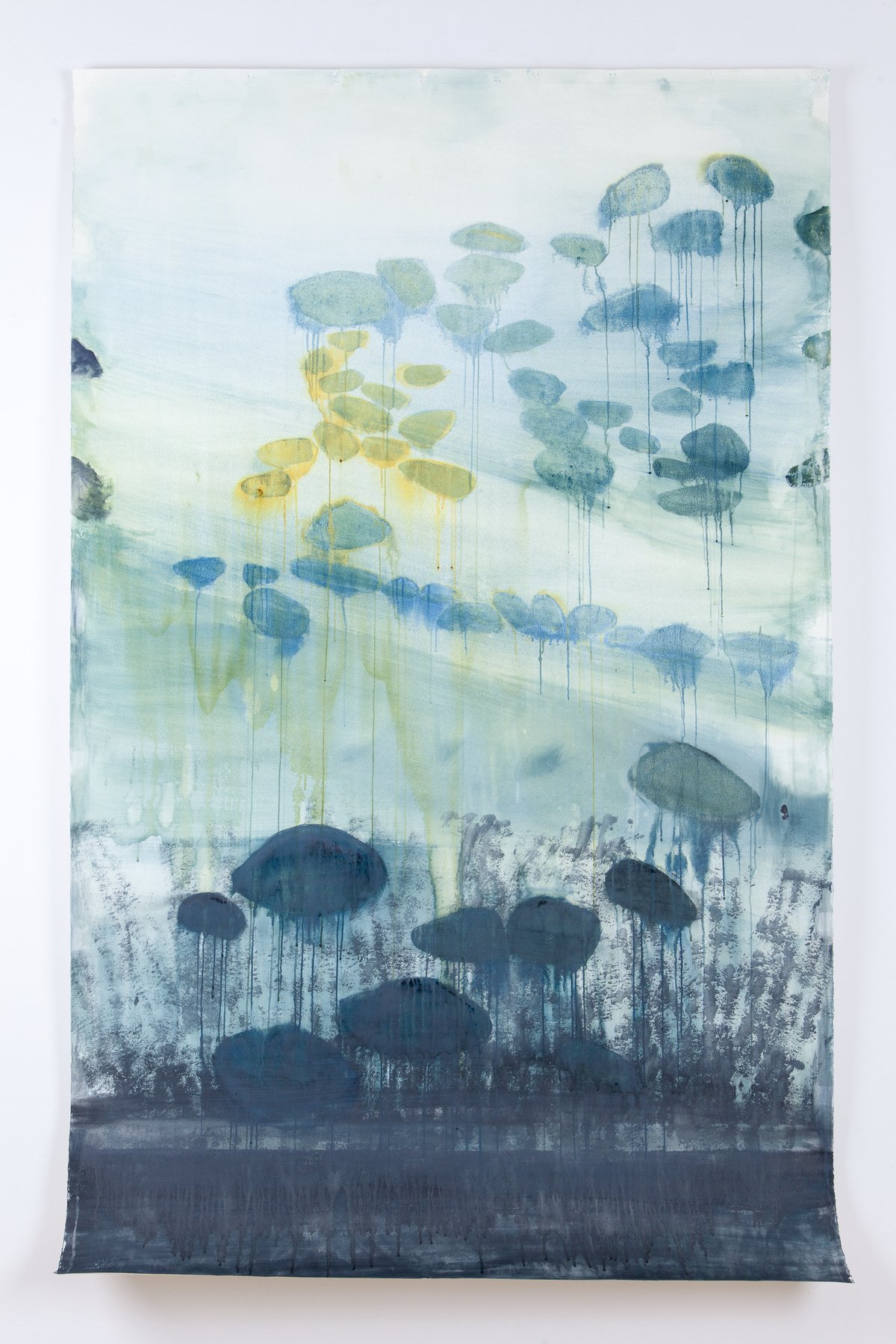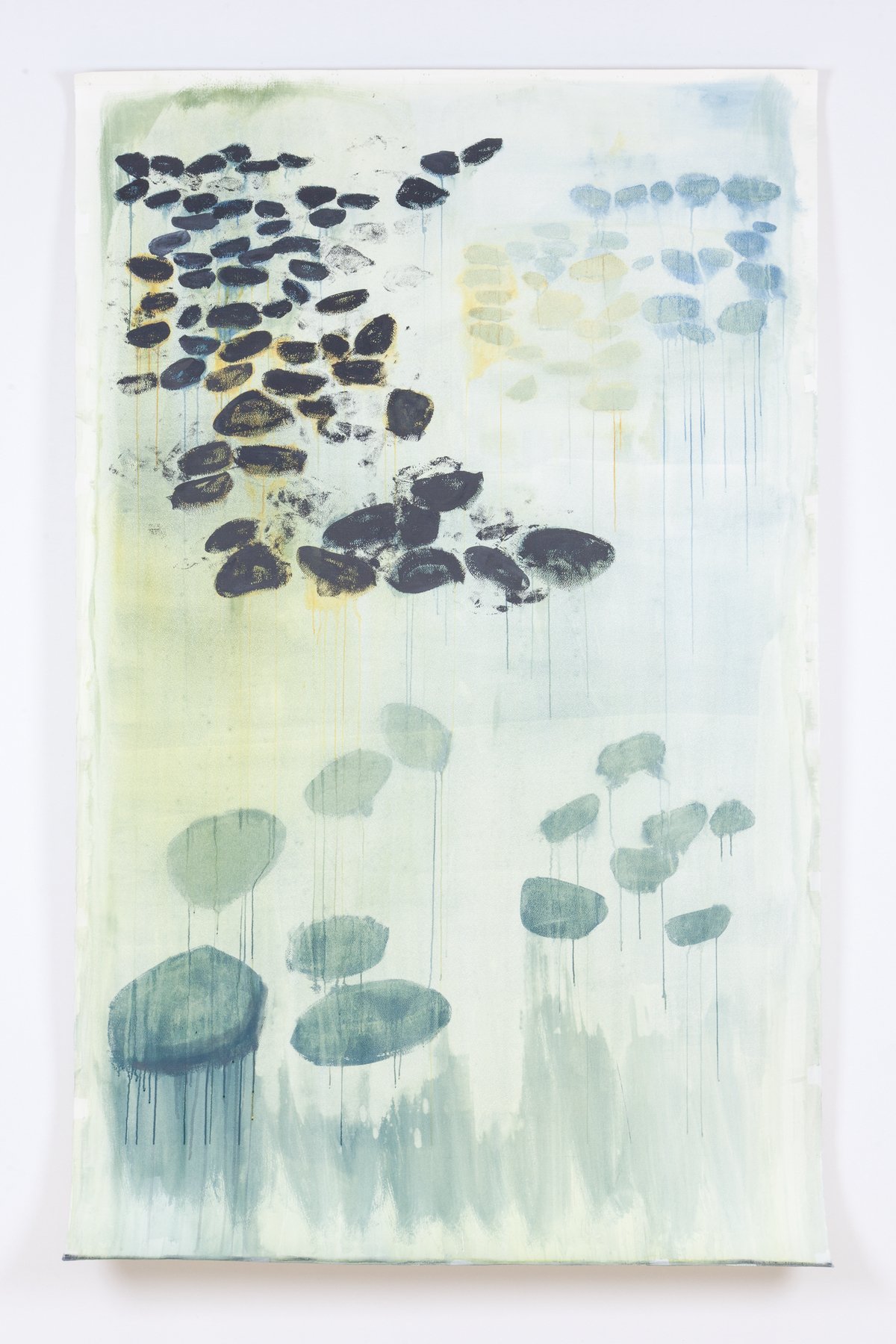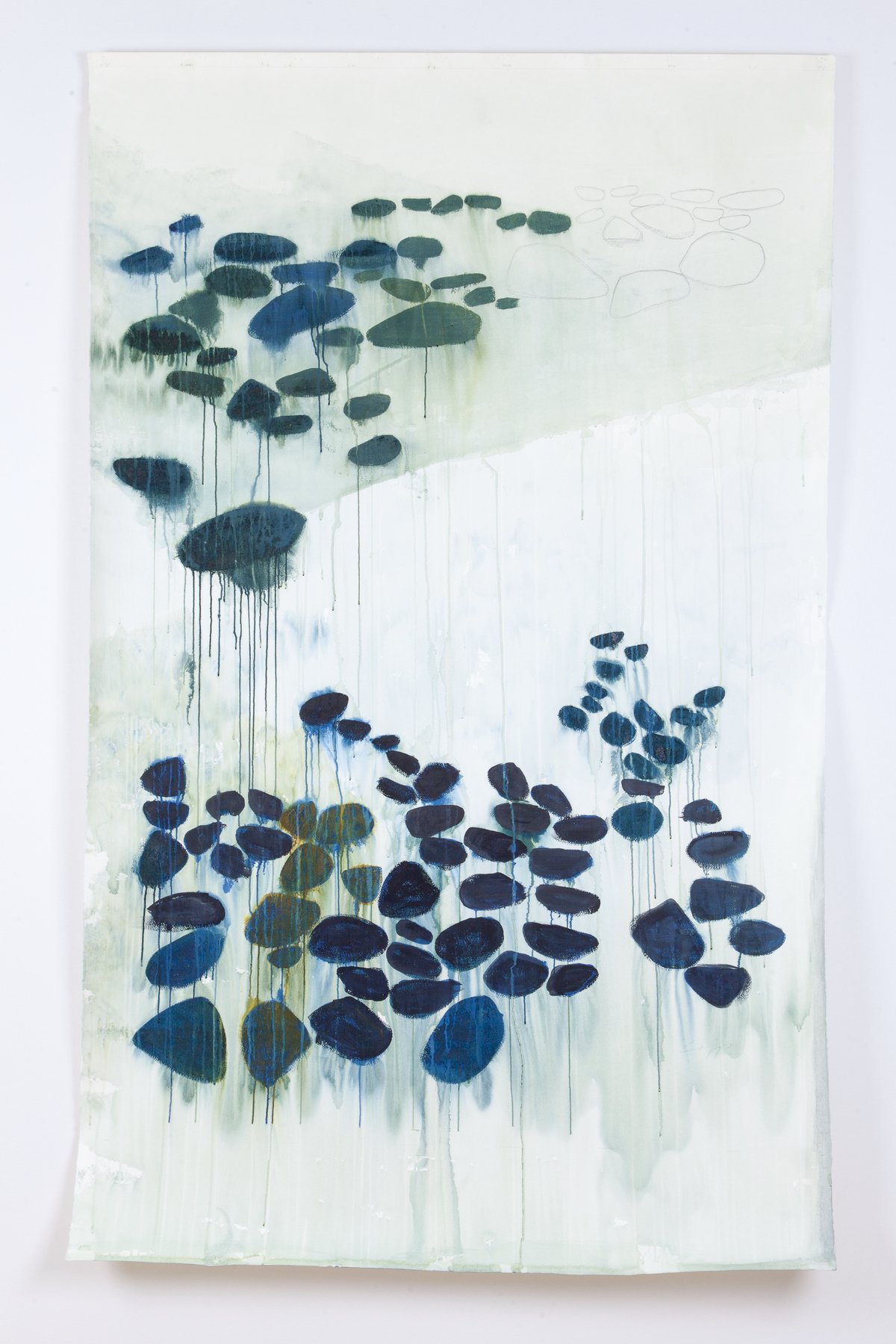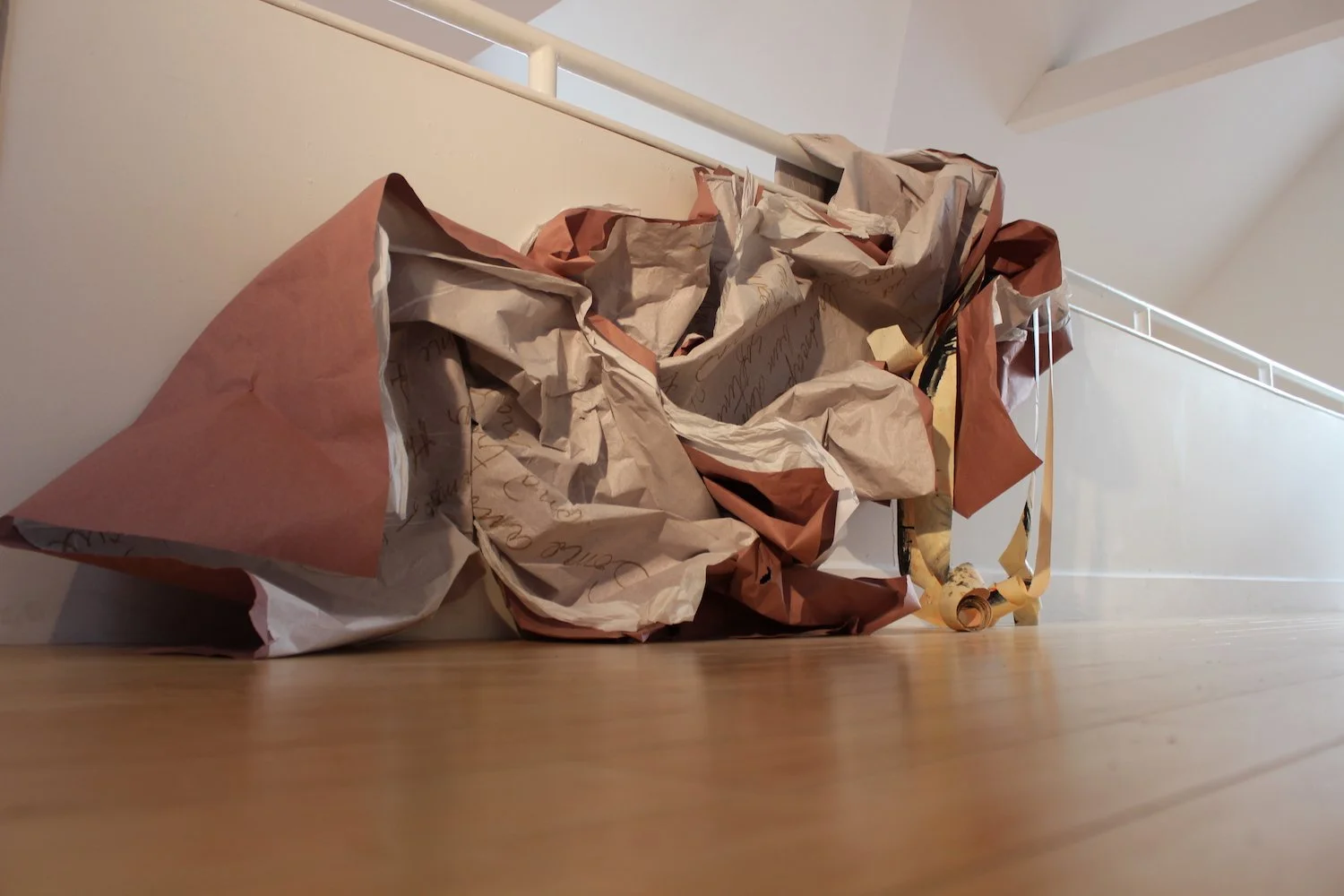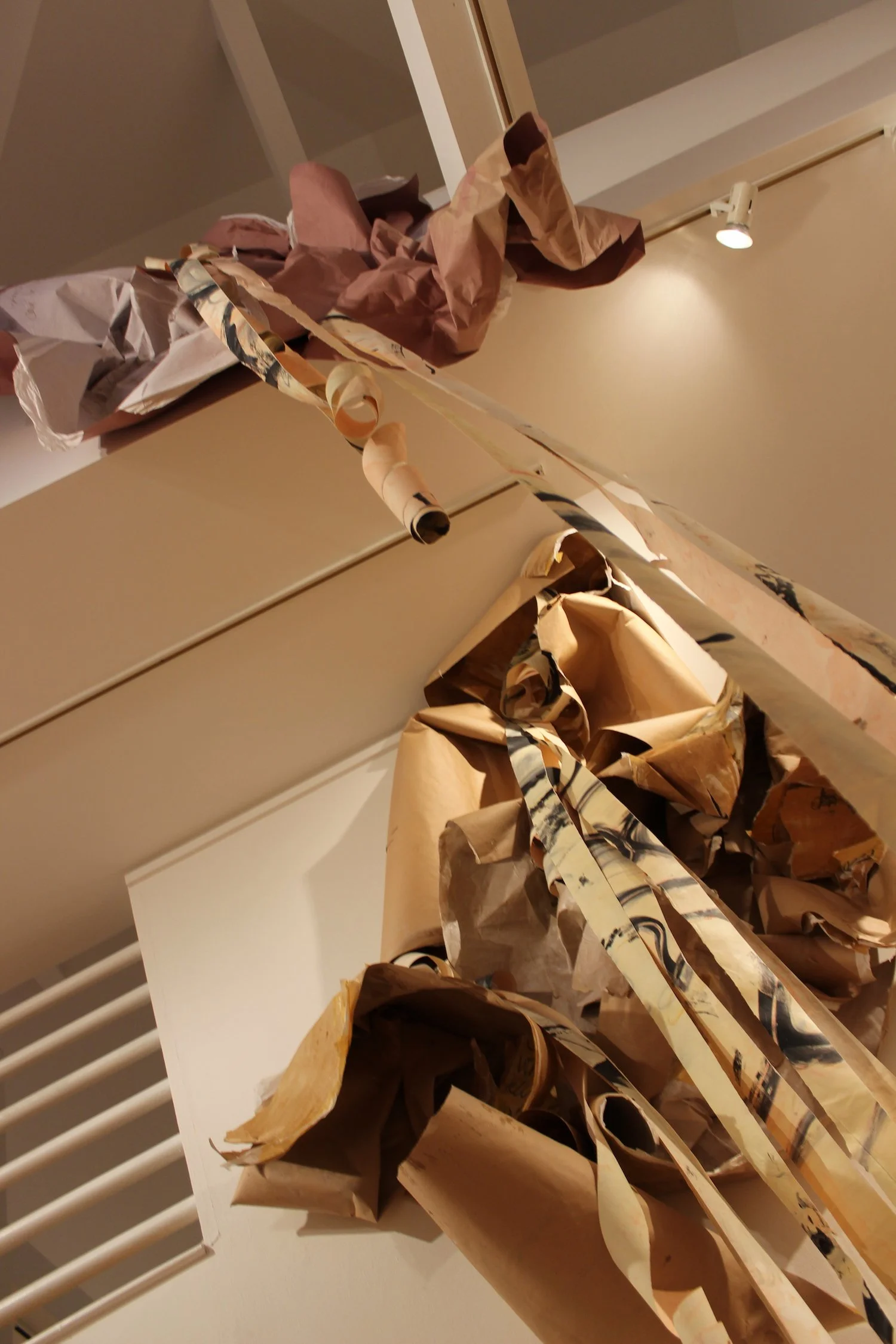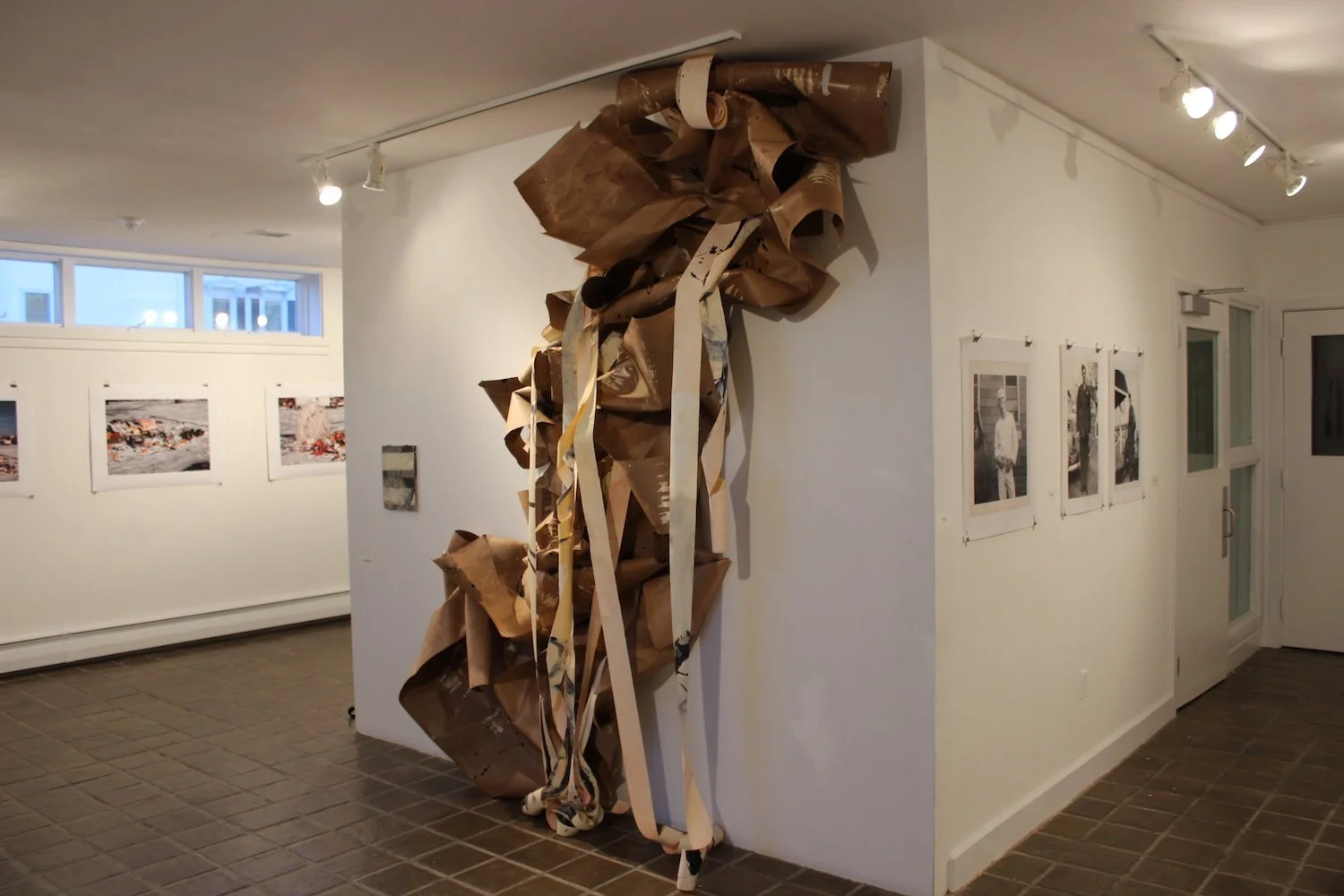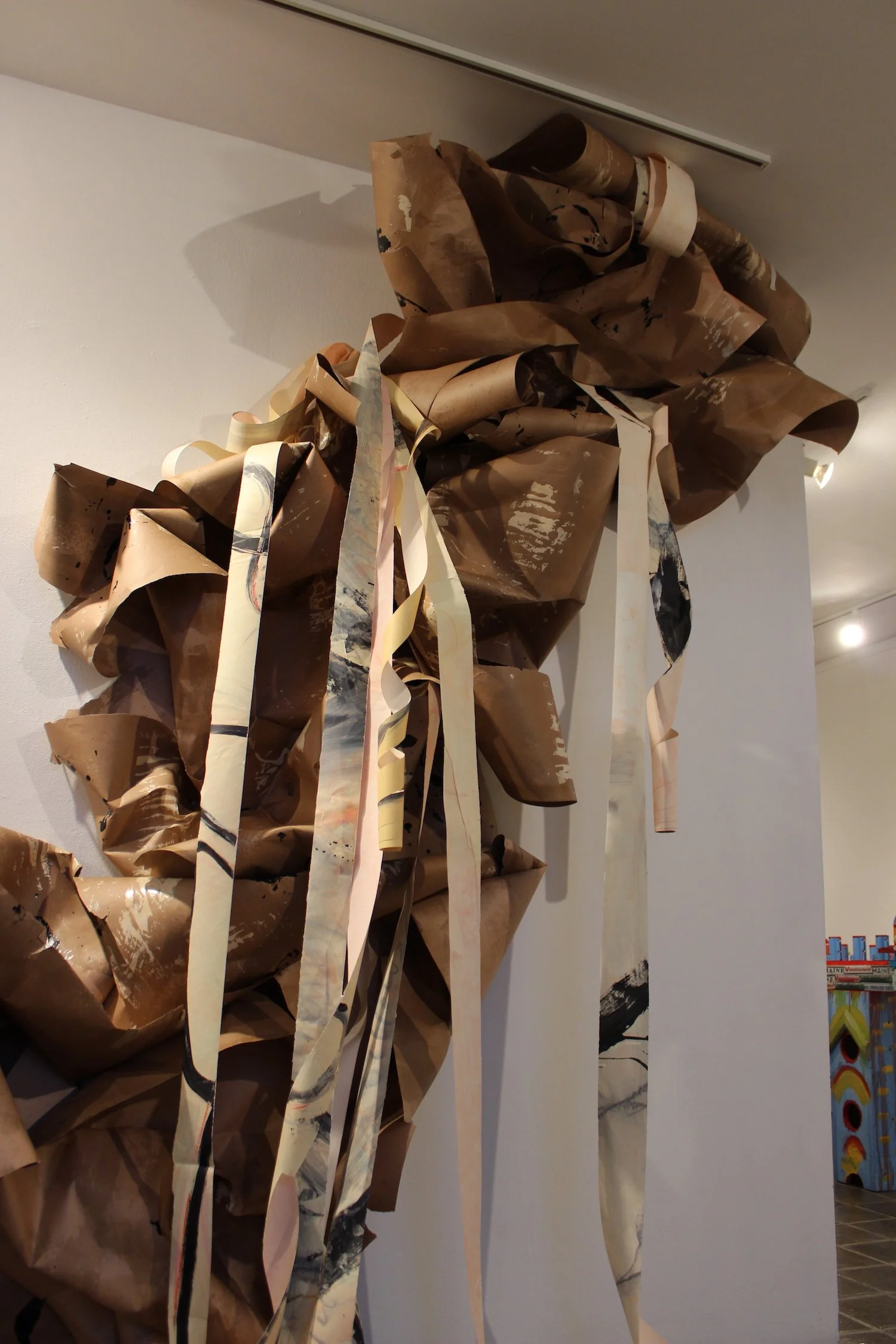Erratics
My personal take on making an installation is that I should respond to the exhibition site, and that the components should refer to a world outside the exhibition space. I also like thinking of installations as walk-in paintings or frozen stage sets where the actors have departed and the visitor is free to roam around.
Here are three recent installations, each one built around the concept of geological manifestations and processes, with glacial erratics and sedimentary rock being the principal players.
Ground/Underground at the University of Maine was a meditation on time, with the sound of bells marking the hours, and an invitation to light a candle to the Virgin as one entered the space. A river of 700 small canvases painted to mimic slate, and the builder's paper erratics were the bedrock of the installation. Other elements included four large-format watercolors, a group of vintage photographs, and paintings from the Jars groups, all reminders that life returns to the earth.
Roadside Erratics at the University of Maine/Farmington was a single work that began on the upper level catwalk and appeared to drop through all three floors to the entrance level. The primary material was builder's paper, with the inclusion of paper strips recycled from Reading the Landscape, my earlier installation at Farmington (1998). Those strips had in turn been recycled from an exhibition at the Blue Grass Airport in Lexington, Kentucky (1996).
Stones on the Move at Beech Hill in Rockport, Maine brought together materials from previous installations, and blended them with the history of Beech Hill - the local rock, the stone masons who built the hut, its owners the Gribbell family of Pennsylvania and Rockport, and the Norwegian architect Hans O. Heistad, as well as present-day hikers and volunteers who daily came to Beech Hill, a Coastal Mountains Land Trust property. This installation was a way for me to thank the Land Trust for the work they do to preserve Maine's habitat and environment.
In all cases, the Erratics articulations are made from builder's paper, shellacked and laminated with tissue, written on with texts from geological books or my own journals, and recycled from one installation to the next. The sediments are layered with a slate-like mix of oil paints on mail-order 8 x 10 inch canvases.
